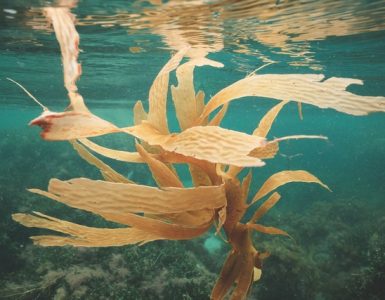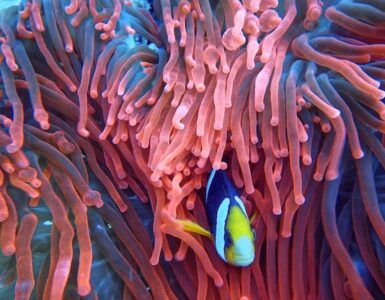“I would say seaweeds are the lungs of the ocean. Seaweeds are not only reducing the carbon dioxide from the ocean but also nitrogen and phosphorous, which enter the ocean because of agricultural runoff and impact the marine environment.”, Neha Jain, founder of ZeroCricle, the company that makes plastic from Seaweed when we asked her what are the advantages of Seaweed.
Seaweed, which is extensively found in our oceans, is without any doubt the most versatile plant found on Mother Earth. From food to fuel, from medicine to cosmetics, and, from generating oxygen to absorbing pollutants, Seaweed has an answer to most of the problems on our planet.
Seaweed is the general name to describe countless species of marine plants and algae that grow in the ocean, rivers, lakes, and other water bodies.
Seaweeds come in different shapes, sizes, and colors and are widely distributed all across the planet. Some seaweeds are microscopic, such as the phytoplankton that live suspended in the water while some are enormous, like the kelp forests that attach to a surface underwater. Seaweed is one of the main reasons behind the green color of the ocean.
Most importantly they are extremely vital to the marine ecosystem, as they provide habitat for a large part of marine life and also maintain the health of the ocean.
5 reasons why seaweeds are important for the environment
Mitigating the impact of Climate Change
Similar to the plants on the land, seaweeds derive nutrition through photosynthesis of sunlight and nutrients present in seawater and release oxygen. However, unlike land plants, seaweed does not have roots because they do not need to absorb water and nutrition from the soil.
In addition, seaweed removes carbon dioxide from the environment and also traps many nutrients that are toxic to marine life. When waste from agriculture, industries, and households is released into the oceans, it creates a nutrient imbalance, seaweeds absorb these excess nutrients and help in maintaining sanity.
Food Source
Seaweeds are not only a food source for marine life, but it has a long history of being consumed as food by humans. Seaweed is an important source of fiber, iodine, and protein, therefore regarded as a food diet for many people living in coastal areas, particularly in countries like Japan, Korea, and China.
Given the food shortages across many parts of the world, seaweed is getting popular as a low-fat food that can be considered an alternative to meat and fish.
Fossil fuel replacement – Biofuels
Subjecting the seaweed to high temperatures and pressures, companies have started creating biofuels. Compared to the carbon emissions generated by fossil fuels, seaweed biofuels are cheaper and play an important role in reducing greenhouse gas (GHG) emissions.
Alternative to Single-use plastic bags
With the advent of material science, seaweed plastic packaging has emerged as a breakthrough alternative in the fight against plastic pollution. Many startups and companies have leveraged the properties of seaweed to create compostable, marine-safe, low-carbon bioplastic packaging.
Animal Feedstock
While seaweed has been used as fertilizer for the last many years, another reason why seaweed is important for the environment is the most recent discovery when livestock is fed with seaweed, methane emission from cattle is reduced substantially. In 2020 study by a group of researchers in Australia found that feeding cows with seaweed resulted in up to an 80% decrease in methane emissions.
Sustainable Seaweed production
Additionally, seaweed is also used in cosmetics, pharmaceuticals, and salad dressings, among others. Seaweed is important not only for the healthy marine environment but has the potential to be a game-changer in other aspects of sustainability.
Seaweed cultivation doesn’t need freshwater, arable land, or fertilizers to grow. Having said that, we cannot start indiscriminately start harvesting all the seaweed present in the oceans. Instead, we need to sustainably cultivate seaweed in aquaculture tank and use it for different purposes.






Add comment